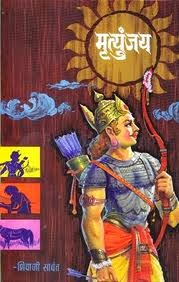Farewell, WDS4 locos!
 |
| Rest In Peace |
The demand for separate shunting locomotives was felt to improve haulage in longer trains. At present, there are four classes of WDS4 locomotives namely: WDS4, WDS4A, WDS4B and WDS4D. The WDS4C classes of engines are rebuilt from the previous WDS3 locomotives. In Mumbai, they were initially homed by Western Railway at the Bandra Marshalling Yard in 1979 in Bandra. The most common locomotives of this class are WDS4B and WDS4D which are frequently spotted in and around Bandra.
Despite many employees from Central Railway requesting not to condemn the WDS4 locomotives, the Central Railway condemned them because the production of diesel hydraulic locomotives were discontinued from 1993-94. These engines have a rugged design and have hydraulic transmission. Hence, their initial tractive effort is very high which means that these types of locomotives can easily pull up to 30 coach trains during regular yard shunting. The condemning of the locos came about due to a new set of WDM2 locomotives being downgraded to the mark of WDM2S which replaced the WDS4 locomotives and the previous WCG-2 locomotives which were being used as shunters.
Presently, there are just two WDS4 locomotives that the Central Railway has. One is being used at its home shed in Kurla and the other one for clearing the muck and silt along the tracks. Due to its sturdy and large wheels, these engines have a higher ground for clearing than normal engines. The Central Railway has traditionally been known for its low-lying areas and during the monsoons, the presence of these locomotives assumes more importance as these engines are fitted with coupling rods.
In the wake of heavy rains, these types of engines were pressed into service. They were extensively used during the 2005 deluge and the 2006 train blasts to clear out the clogged suburban train system. In times of electric failure and when trains got stuck during the monsoons, these engines were called for and pulled the trains to the nearest carsheds or workshops for their routine maintenance. Indeed it is really unfortunate that we are deleting an integral part of history as these locomotives were the only engines in the Indian Railways today which had hydraulic transmission.
The human race has been engineered such that our emotions have the power to connect with anything including abstract opinions or non-living things. The puny 600 HP shunters WDS4 locomotives which once gave a feeling of steam engines through their wheels will now fade into oblivion. As we brace ahead for bidding adieu to these puny locomotives as they lose their battle for survival, we can only hope to retain a part of these engines purely for posterity and heritage reasons.


Comments